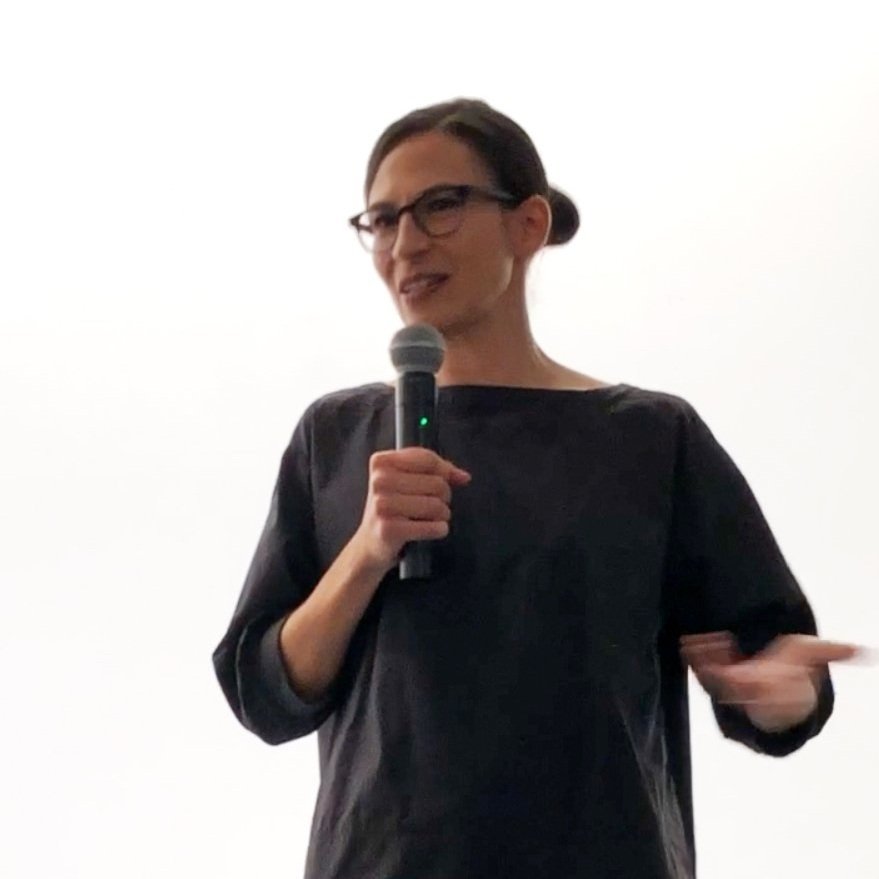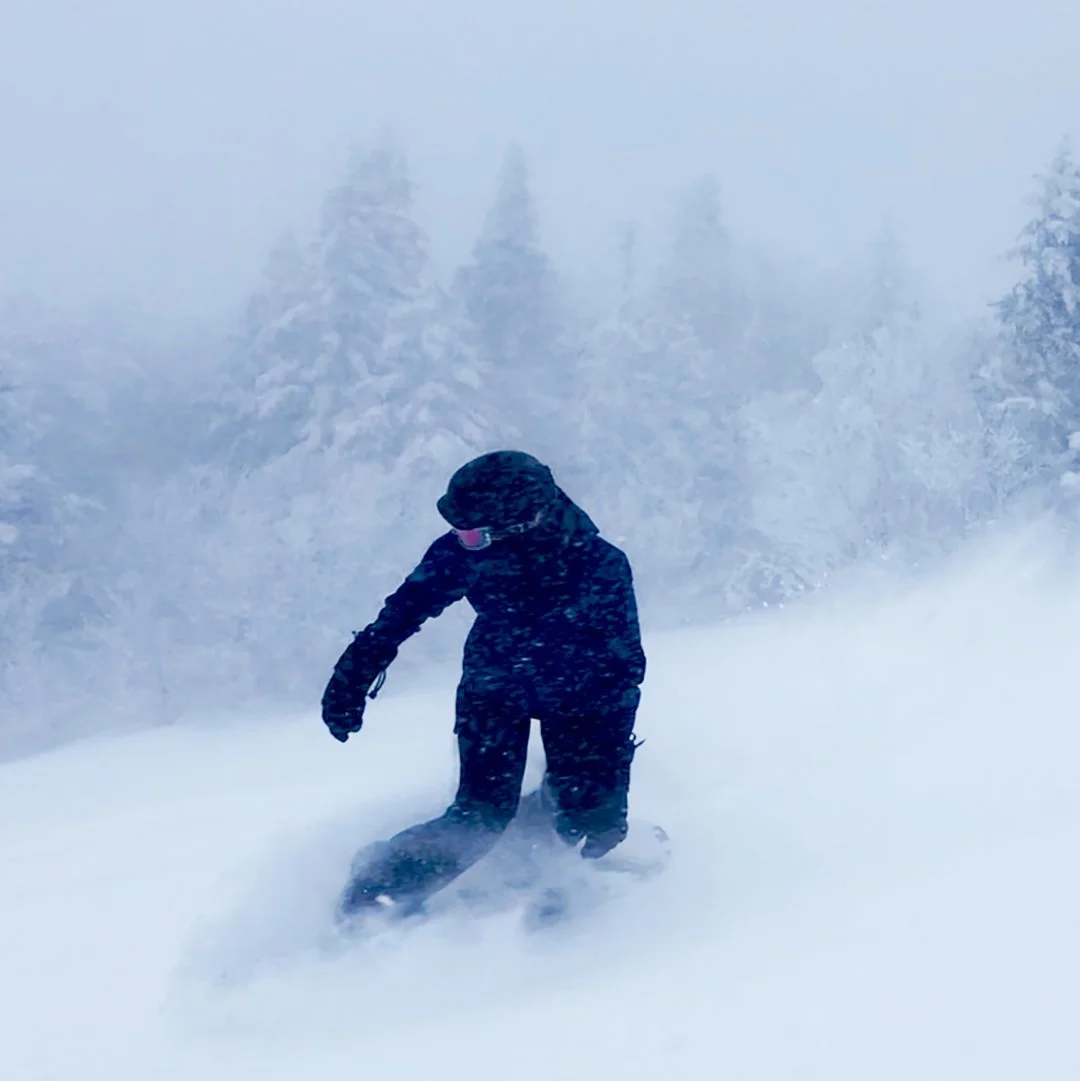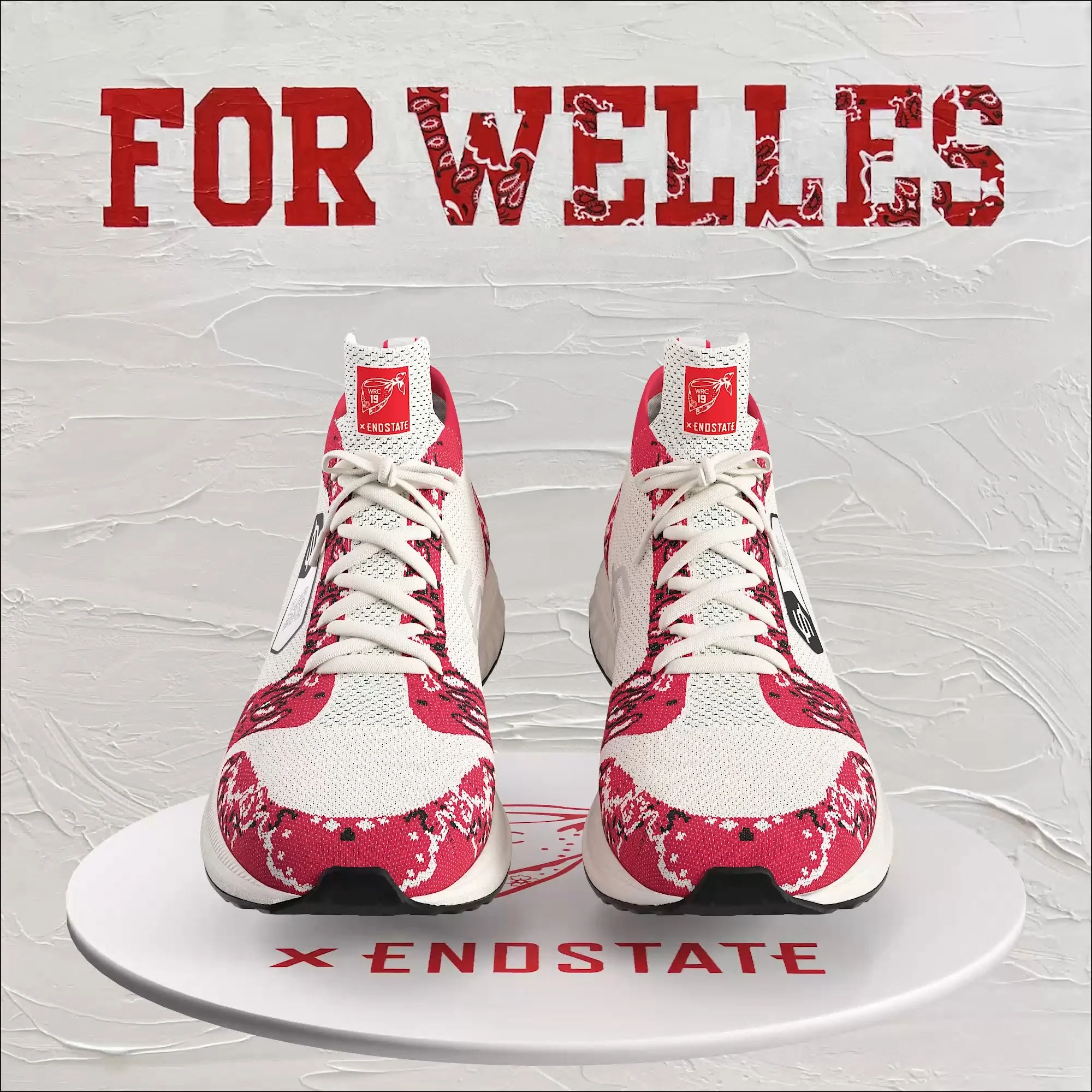From Sneakers to NFTs, Stephanie Howard’s Designs Continue to Blaze the Future
WiST talks to women and men in sports and sports technology who embody a more diverse and inclusive workforce, setting the benchmark for their peers and future generations.
By Alysse Soll, CEO underdog advisory and WiST Board Chair
It STEMs from High School
Stephanie Howard is that rare combination of talent and grit, art and science, sweet and strong, analytical and free-flowing. Her life and career comprise both deconstruction and reconstruction. When walls come up, she finds a way to scale them.
A love of art coupled with solid math and science skills, Stephanie learned about the field of industrial design from a high school art teacher at her public school in Enfield, Connecticut.
“Industrial design was the perfect career choice, balancing problem solving as shown through my strengths with math and sciences with my interest in art.”
Selecting a college wasn’t easy, but she decided on Rochester Institute of Technology to combine her passion for rendering and drawing with STEM. Growing up dancing rather than disassembling electronic products or wood modeling, Stephanie felt a little behind at the start of her first semester. In spite of the 8:1 male-to-female ratio in her industrial design major in the early 90s, she would quickly find her place among her classmates through determination and hard work.
Upon graduation, while Stephanie was interviewing at consulting studios to avoid being pigeonholed in a specific niche, she learned of an opening for a designer at New Balance and landed her first job there. Having never designed sneakers before, she stayed true to her “no niche thesis,” took the sneaker designer position and freelanced with consulting studios in the evening. Stephanie jokes, “I designed sneakers by day and baby bathtubs by night.”
Right out of the gate, Stephanie started a sneaker revolution when she changed the New Balance design and logo, challenging the status quo after getting the go-ahead from the company owner. The risk paid off with positive press and sales success, and the NB850 became a classic model and was reissued in 2019.
Stephanie reflects, “One can never predict what the future will bring. I was certainly surprised when that model was re-released as a collectible sneaker over 20 years later in 2019, long after I left the company.”
Be the SME (Subject Matter Expert)
In 2000, Stephanie joined Nike as part of the running footwear team and later expanded into the hockey division. With each sport, she designed performance products for, Stephanie worked with biomechanics experts to understand the athletes’ needs.
Promoted to design director, she oversaw the Nike and Bauer Hockey brands. Here she had the unique opportunity to develop more than just footwear and expand into helmets, skates, gloves, and other equipment. She worked closely with marketing to ensure the design language worked for each brand’s positioning. The brands were separate but competing with the same products at the same price points.
Stephanie created a winning formula earning the respect of her team over time. As an outsider from the hockey culture, she had to prove herself. Stephanie shares, “By coming to every meeting knowing everything I could and doing my best work possible, I could protect myself from the doubters. No one is coming to the meeting knowing more than I know about the subject matter I'm talking about.”
Plus, she felt empowered by having Chris Zimmerman and Duke Stump at her back and advocating for her.
Says Stephanie, “I think there are many automatic doubters. It comes from the psychological factor that ‘I trust people that look like me.’ Women have to over prepare every time. In industrial design, many of the women that graduate go into CMF roles (color, material, and finish) or user experience, but not the physical product design. I think women often have to do twice the work to get accepted, causing many women to choose alternative paths.”
In addition to being an SME, Stephanie empowers others. Leading a male-dominated team wasn’t easy, and her ability to focus on collaboration made her successful. Having the right people on your team makes all the difference.
When hiring, Stephanie looks for more than just a hard worker. Creativity is a must to be able to generate new ideas and technologies. Being an independent thinker allows for moving in new directions when those ideas have to be implemented. And you need to be resilient and not afraid of hurdles and failures that come with the latest technology. You also want someone who is goal-oriented, has skin in the game, and will reap the rewards when they arrive.
Switching industries entirely in 2006, Stephanie joined Seventh Generation, a sustainable household products maker, as innovation director. This was her opportunity to work for a company with blue-sky thinking, creating products that are socially responsible and help make the world a better place. Plus, being pregnant was the perfect time for her to learn about new mother behavior and sustainable, healthier products.
In addition to understanding what’s needed to be green and sustainable, Stephanie learned the nuances of the supply chain. She worked on innovation projects to push the boundaries of materials and processes, but she couldn’t control the entire life cycle since Seventh Generation didn’t own the manufacturing or the raw materials. Learning the critical path to quick product turnaround is what makes her so successful today.
Stephanie says, “I felt like I was growing a lot in my career by making such a big change.”
With the wealth of knowledge Stephanie had accumulated at New Balance, Nike and Seventh Generation, Stephanie decided to launch her own design consulting firm, How and Why. Not only could she be more flexible, but she felt respected for what she could bring to the table, her subject matter expertise. Stephanie helped companies make decisions based on research, a broader scope, best practices, and years of experience. Though a consultant, she felt like an integral part of her client’s teams, planning the roadmap, getting her clients farther in the innovation space, and affecting greater change inside organizations.
Reaching the Endstate
While Stephanie was happy running How and Why, everything changed when Bennett Collen heard her speak at a webinar. Bennett, whose first company was acquired by GoDaddy, was working with blockchain technology, helping clients secure trademark rights. He was thinking about how technology and Web 3 could be the future of sneakers, and Stephanie was the sneaker expert. When he reached out on LinkedIn, she assumed he wanted a consultant, but when Bennett shared his vision, and after a few meetings about the potential of what they could build, he asked her to be the co-founder, and she was on a new path.
At Endstate, Stephanie is building an ecosystem that connects a physical product with its digital twin for unique customer experiences. Endstate creates a digital sneaker as an NFT and tethers it with the same exact pair of sneakers in physical form for the NFT owner.
In her words, ”Endstate is creating a revolution in the sneaker industry as it pushes the boundaries of what’s possible and what’s next. “ As a startup, the pace is fast and furious, so Stephanie’s knowledge of design and supply chain efficiency is invaluable. It’s hard work, but she loves it. She’s been training for this all her life.
She muses, “Technically, you should treat work a little bit like a sport, right? The more you practice and put into it, the better your performance. And work is really no different. Every athlete learns over time that they have to put in even more work and training to be at their best.”
WiST: As you look across the arc of your life and career, can you identify key moments that challenged your path forward and how you dealt with that challenge then and now?
At 23 years old, when everything looked on track for my industrial design career, doctors discovered a tumor that appeared malignant. Massive surgery and biopsies led to a five-day-long ordeal as I waited with my family to hear the outcome. I spent days in the hospital surrounded by cancer patients until the final results revealed that the tumor was benign. This experience changed my perspective on life - forever.
I made myself promises that I knew would guide my life and career. First promise, I vowed to do more, to give back to society, and I started volunteering at a domestic abuse shelter. My second promise was to embrace life and release some of the hard-working parts. In this quest, I discovered snowboarding, which gave me an immediate sense of life without boundaries, and it is one of the things that really makes me happy. It’s now a family lifestyle giving me the freedom to pursue the lightness of being.
On the professional front, I understood that I could overcome and meet challenges, but when these challenges became insurmountable or no longer fit my lifestyle or thesis, it was time to consider other options.
I have had the opportunity to design for niche brands, big brands, and my consulting company work. Each had its challenges, but rewards were to be found when I shut out the noise, put my head down, and focused on how I could either create a product from scratch or improve on an existing product. True to my promises to myself, if the environment or the workload was not aligned with my well-being, I was open to change. Being open to change, not scared of it, is what allowed me to push the boundaries of what I could do and uncover what I could accomplish.
At Endstate, everything I have done in my prior professional capacities all came together in what may be the greatest challenge of my career – building something from nothing, pushing boundaries, and making it work.
WiST: You've participated in a career trifecta, corporate roles, and consulting roles and are now the founder of a fast-growing startup. Each role requires unique skill sets and attributes to succeed, from managing people to decision-making. How do you handle these critical areas?
Managing people is all about empowerment. The more empowered they are, the more successful they can be. You won't get their best skills or ideas if they don't feel empowered and instead feel they're just providing a service. When I manage, I allow space for a lot of independent thinking and expression of ideas.
As co-founder of a startup, I recognize my decisions are more consequential. While I don't find decision-making easy, I follow the most important rule; take the emotion out of it. There is never a place where a personal opinion overrides analytical thinking.
My medical crisis spun me into a panic, so now I have a great perspective on what really should spin me into a panic. I'm always able to keep a clear frame of mind when a big decision has to be made. This enables me to dispassionately consider the pros and cons and identify potential outcomes based on tangible and intangible variables, not personal preference.
Together, Bennett and I analyze the pros and cons and come to an agreement on decisions to be made. Even when we do not see eye to eye, we dig into the real upsides and the real downsides so we can make the most informed decision.
WiST: Innovation has always been your north star; in your early career, innovation was about improving performance on physical products. Endstate innovation is literally in your DNA as you set the benchmark for physical and digital products that unlock the power of Web 3 technology.
When we talk about Web 3 and the digital side of products, the most exciting part is the innovation around the experiences that a digitally connected product can unlock. Our physical sneakers have an embedded, scannable NFC chip, which opens a whole new world of bonus opportunities for the fan. This adds value to the physical product and creates real-life experiences. Think about the possibilities - a backstage pass to a concert, a unique tailgate experience at a game of their favorite athlete or other myriad experiential events and activities.
When we collaborate with an artist, musician, or athlete, we can provide unique perks beyond their signature sneaker design, which we hope is coveted while being worn by their fans. We think about ideas to bring our collaborators closer to their biggest fans. I look at the emerging future and how people will interact in both digital and physical spaces and try to create new ways to pack more value into every product we design.
The Red Bandanna Sneaker by Endstate launched in collaboration with the Welles Remy Crowther Charitable Trust. 100% of the proceeds from this sneaker drop will be donated to the Trust to further Welles Crowther’s legacy of heroism and community service.
We’re collaborating with DeVonta Smith, a wide receiver of the Philadelphia Eagles and a former Heisman Trophy winner. He has his own signature sneaker design, and his biggest fans get to purchase it. Wearing it signals they are huge Philly or DeVonta fans. His sneakers come with perks like an in-person event with DeVonta that the sneakers are the ticket into. Also, when he hits performance milestones throughout the season, his fans are rewarded.
Every single “drop” is different, depending on who we're collaborating with. This is what makes us unique. We seek to collaborate with someone who has synergy with our brand and has a great story to tell. We create a product experience that unlocks a connection with them for their community.
WiST: In the world of tech-first STEM-heavy business verticals where women are in the minority, what methods have you mastered to position yourself as respected, validated, and a forward-thinking leader? And what advice would you offer to others when faced with barriers that seem too high to breach?
Stephanie is not precious about her wisdom. She learned the hard way - survive, then thrive. Here she drops some pearls of wisdom:
Life is not fair: My dad always said, ‘Life is not fair.’ It’s just simply the truth, and one should not expect it to be otherwise. Everybody runs into challenges at some point in their careers. Women may run into challenges more often simply because there are doubters who challenge whether a woman can accomplish what men can.
If you see a roadblock, find a way around it: It's tough to get through a career and not run into roadblocks (people or circumstances). Once you grasp that, you are no longer the victim. You can take confidence knowing you have control over your decisions. If you see a roadblock, find ways around it. This might require leaving a position at a company you enjoy or having that difficult discussion. You need to take control of where you're going and what you are doing.
Failure is your teacher: I’ve experienced failure. I’ve made mistakes. I’ve been unprepared (gasp). In these instances, I recognized it was me (not others), and I am fully accountable. This is how I learned how to do better next time, how to overcome roadblocks, how to drive consensus, how to drive success – from my failures.
Be the SME (subject matter expert): Make sure you are constantly proving yourself by doing the research and being the most educated you can be on the subject surrounding your work. You own the mark that you are making. Make the most significant impact you can with thoughtful, additive ideas.
Know thyself: I know I'm a really hard worker. I'm analytical and strategic in my thinking. I've educated myself on all aspects of any idea that I'm providing. If something doesn't work, I rarely feel like it's because I didn't put enough work or thinking into it. I've built confidence over time, and having confidence is so very, very important.
A special thanks to Stephanie for sharing her journey with the WiST community. Keep calm and carry on. Inspiration comes in all forms. We are grateful at WiST for Stephanie’s early and passionate supporter of WiST as a founding board member.
Join the WiST community and check out Endstate.
To learn more about Stephanie’s work with Endstate in the web 3 world, check out WiST Presents: How I Got Into Sports Tech NFTs in Sports webinar.






